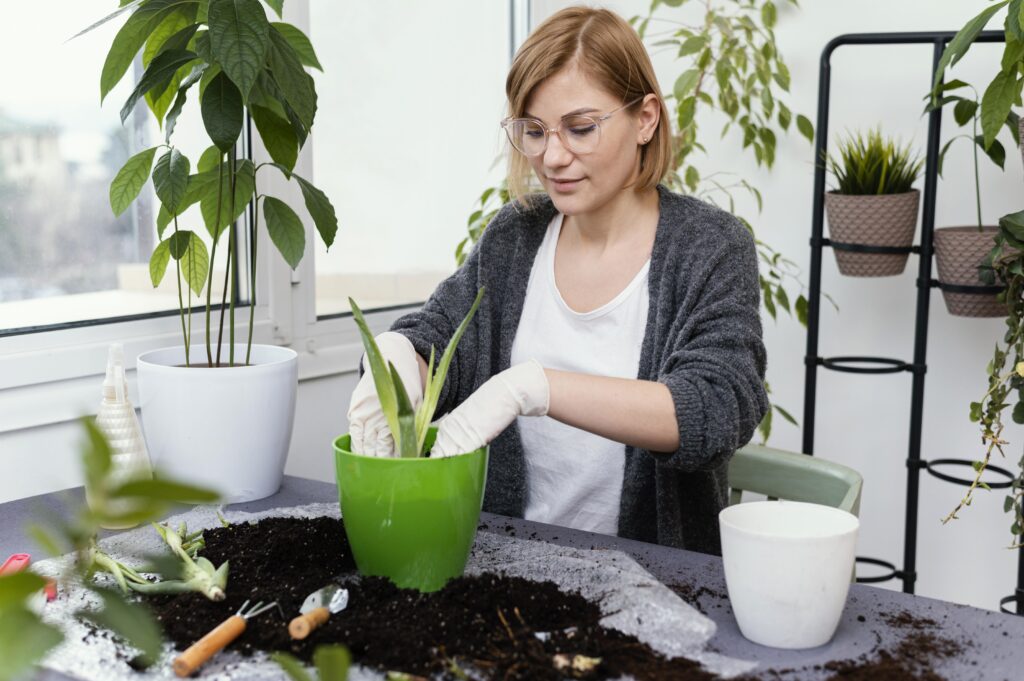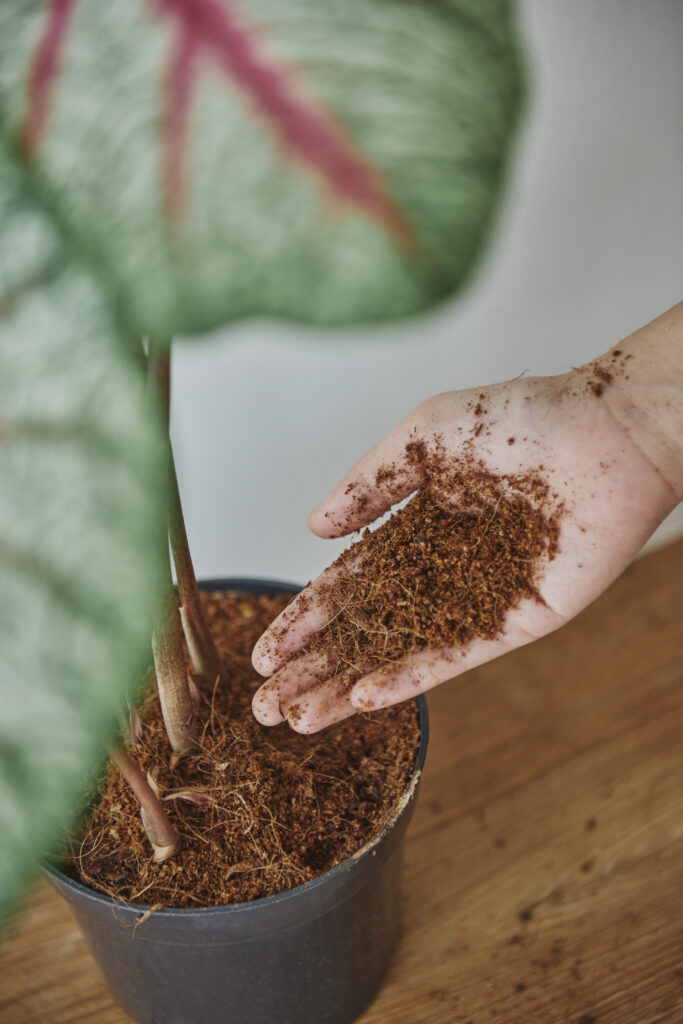
Indoor plants have become progressively famous, decorating homes, workplaces, and different indoor spaces with their rich foliage. To guarantee your indoor plants flourish and prosper, it is significant to choose the right manure. In this article, we’ll dive into the universe of indoor plant manures, investigating the most ideal choices to keep your organic buddies solid and energetic.
Table of Contents – Best Fertilizer for Indoor Plants
Understanding the Needs of Indoor Plants
Indoor plants, while protected from unforgiving outer circumstances, actually require fundamental supplements to develop lavish and sound. Understanding their particular necessities is urgent prior to choosing the right compost.
Understanding Best Fertilizer for Indoor Plants
Indoor plant composts are supplement rich substances intended to enhance the supplements present in the dirt. They give fundamental components that plants need for development, like nitrogen (N), phosphorus (P), and potassium (K). These supplements support different plant capabilities, from root advancement to blossom creation.

Key Nutrients for Indoor Plants
The three essential supplements, N-P-K, play unmistakable roles.The NPK proportion, addressing the centralization of Nitrogen (N), Phosphorus (P), and Potassium (K) in composts, assumes a vital part in plant development. Various plants request changing proportions – we should interpret this code!
Nitrogen: The Growth Elixir
This is the development remedy. It resembles the protein shake for your plants, making leaves and stems solid and vigorous. Thus, in the event that you have greeneries or bug plants with a style for emotional foliage, nitrogen is your plant’s BFF.
Phosphorus: Root and Flower Power
Root power and bloom please! Phosphorus fills solid root development and those brilliant blossoms you can’t get enough of. Orchids and harmony lilies? They can’t avoid a touch of phosphorus spoiling.
Potassium: Overall Vitality
This is the handyman supplement. Like a multivitamin supports in general imperativeness, upgrades sickness opposition, and assists plants with taking care of pressure. Succulents, for example, love potassium for their peaceful way of life.
Types of Fertilizers
Organic Fertilizers
Natural composts, like fertilizer, excrement, and fish emulsion, are gotten from normal sources. They release nutrients slowly and improve soil structure over time, fostering a healthy environment for plant roots.
Synthetic Fertilizers
Synthetic or inorganic fertilizers are manufactured chemically, offering precise nutrient ratios. They are fast-acting and deliver nutrients directly to plants. However, overuse can lead to nutrient imbalances and harm beneficial soil organisms.
Choosing the Best Fertilizer for Indoor Plants
Fertilizer NPK Ratio
The N-P-K ratio on fertilizer labels indicates the nutrient proportions. Choose a fertilizer with a ratio that aligns with your plant’s needs. For instance, a balanced ratio of 10-10-10 suits many indoor plants.
Slow-Release vs. Liquid Fertilizers
Slow-release fertilizers gradually provide nutrients over weeks, requiring less frequent application. Liquid fertilizers act quickly but need more frequent application. Consider your schedule and plant preferences.
Plant-Specific Fertilizers
Different plants have varying nutrient requirements. Opt for specialized fertilizers tailored to your indoor plants, such as those designed for flowering plants, succulents, or foliage plants.

Tailoring Fertilization to Plant Types
Different types of indoor plants have distinct nutritional needs. We’ll guide you through customizing your fertilizer approach for succulents, foliage plants, and flowering plants.
Succulent Sweet Spot
Succulents thrive in well-draining soil and benefit from a low-nitrogen fertilizer to avoid excessive growth.
Foliage Feeding
Foliage plants demand a balanced fertilizer to support their lush green leaves and steady growth.
Nurturing Blooms
Flowering plants necessitate a phosphorus-rich fertilizer to bolster the development of vibrant blooms.

Top Picks: Best Fertilizer for Indoor Plants
Miracle-Gro Indoor Plant Food
Miracle-Gro’s indoor plant food is renowned for its balanced formula, promoting lush growth and vibrant blooms. Its ease of use and effectiveness make it a favorite among plant enthusiasts.
Espoma Organic Indoor Plant Fertilizer
Espoma’s organic fertilizer is a go-to choice for those seeking natural options. Packed with beneficial microbes, it enriches the soil and ensures steady, long-term growth.
Osmocote Plus Outdoor and Indoor Plant Fertilizer
Osmocote Plus offers a controlled-release formula, supplying nutrients consistently. It’s ideal for busy plant owners and provides a reliable source of nourishment.
The Thrill of DIY Fertilizers
Now, if you’re feeling a bit adventurous, why not create your own plant potion? We’re talking about DIY fertilizers, concocted from everyday household items. It’s like crafting a magic potion for your plants – just a bit more down-to-earth.
Application and Dosage
Follow the package instructions for accurate application. Generally, it’s best to dilute liquid fertilizers to prevent root burn. Apply slow-release fertilizers according to the recommended timeframe.
Fertilizing Schedule
A general rule is to fertilize indoor plants during the growing season (spring and summer) when they are actively producing new growth. Lessen or stop preparation during the lethargic cold weather months.
Signs of Over-Fertilization and Under-Fertilization
Monitor your plants for signs of nutrient issues. Over-fertilization can lead to burnt edges on leaves, while under-fertilization manifests as stunted growth and yellowing leaves.
Natural Alternatives to Commercial Fertilizers
Household items like coffee grounds, eggshells, and banana peels can enrich the soil naturally. They contribute nutrients and can be a sustainable addition to your fertilization routine.
Tips for Enhancing Fertilizer Efficacy
- Even Application: Distribute fertilizer evenly to prevent concentrated doses.
- Watering Routine: Water plants before fertilizing to avoid stressing them.
- Avoid Foliar Feeding: Apply fertilizer to the soil, not on leaves, to prevent burns.
- Regular Soil Amendments: Improve soil structure through regular additions of compost.
Mistakes to Avoid When Fertilizing Indoor Plants
- Excessive Fertilization: More isn’t better; stick to recommended doses.
- Ignoring Plant Signals: Adjust fertilization based on your plant’s health and growth.
- Using Outdoor Fertilizers Indoors: Indoor plants have distinct needs; use appropriate fertilizers.
Sustainable Love for Your Plants and the Planet
Here’s a little secret: your love for plants can also be your contribution to a healthier planet. Explore eco-friendly fertilizer options that not only nourish your plants but also make Mother Earth smile.
Conclusion : Best Fertilizer for Indoor Plants
Choosing the best manure for your indoor plants is a fundamental stage toward encouraging a flourishing indoor nursery. Figuring out your plants’ nourishing necessities and picking the right kind of manure can have a huge effect in their development and generally wellbeing.
FAQs (Frequently Asked Questions) for Best Fertilizer for Indoor Plants
- Can I use outdoor fertilizers for my indoor plants? It’s best to use fertilizers formulated specifically for indoor plants, as their nutrient requirements differ.
- How frequently would it be a good idea for me to prepare my indoor plants? During the growing season, fertilize every 4-6 weeks; reduce frequency in winter.
- Are organic fertilizers better than synthetic ones? Both have their benefits; organic fertilizers improve soil health, while synthetic ones offer precise nutrient delivery.
- Can I make my own indoor plant fertilizer? Yes, household items like diluted coffee grounds and crushed eggshells can be used as natural fertilizers.

Pingback: Discover the Best Potting Soil for Indoor Plants : Unveiling the No. 1 Green Secret - Blossom Brighter - CREATIVE WEB-MANIA
Thank you for your sharing. I am worried that I lack creative ideas. It is your article that makes me full of hope. Thank you. But, I have a question, can you help me?
Yes, you can share your questions here or through e mail.
Thank you for your valuable time.
Your article helped me a lot, is there any more related content? Thanks!
Thanks for sharing. I read many of your blog posts, cool, your blog is very good.